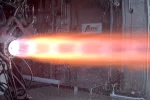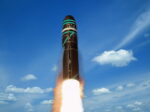Ukraine is reportedly seeking to acquire up to 25 U.S.-made MIM-104 Patriot air defense systems in a long-term effort to construct a robust integrated air and missile defense (IAMD) architecture. The move reflects Kyiv’s strategic shift from ad hoc wartime coverage toward permanent deterrence against Russian aerial threats—including ballistic missiles, cruise missiles, and increasingly advanced glide bombs.
Strategic Shift Toward Permanent Air Defense Architecture
Since the start of Russia’s full-scale invasion in February 2022, Ukraine has relied on a patchwork of donated Western air defense systems—ranging from IRIS-T SLMs and NASAMS to Gepard SHORAD platforms—to protect critical infrastructure and urban centers. However, these assets are limited in number and coverage area. The introduction of the Patriot system in spring 2023 marked a turning point: it became the only fielded Ukrainian system capable of intercepting Russian Iskander-M ballistic missiles and Kinzhal aeroballistic missiles with proven combat success.
According to recent statements by Ukrainian officials cited by multiple sources including Defense Express and Politico, Kyiv now seeks not just temporary protection but a scalable national IAMD framework anchored around high-tier systems like the Patriot. The target figure—25 batteries—would enable distributed coverage across major urban centers, industrial zones, nuclear power plants (e.g., Zaporizhzhia), logistics hubs, and front-line regions.
Why Patriot? Capabilities That Matter
The MIM-104 Patriot system—developed by Raytheon Technologies—is one of the most mature and combat-proven high-altitude air defense platforms in NATO inventories. It comprises radar (AN/MPQ-65 or upgraded variants), command-and-control units (ECS), launchers (M901), and interceptors such as PAC-2 GEM-T or PAC-3 MSE.
- PAC-3 MSE: Hit-to-kill interceptor optimized for ballistic missile defense; range ~60 km against TBMs.
- PAC-2 GEM-T: Blast-fragmentation interceptor for aircraft/cruise missile threats; range ~160 km vs aircraft.
- Radar: Phased-array radar with track-via-missile guidance; capable of tracking >100 targets simultaneously.
The system’s ability to engage multiple threat types—including hypersonic-like targets such as Russia’s Kh-47M2 Kinzhal—has been demonstrated in Ukrainian service since May 2023. In one notable engagement near Kyiv in May 2023, Patriots successfully intercepted six Kinzhals launched simultaneously—a feat previously considered unlikely by many analysts.
Procurement Pathways: FMF Funding and Industrial Bottlenecks
The acquisition of up to 25 batteries would represent one of the largest foreign sales or transfers of Patriots ever attempted. Each battery costs between $1–1.5 billion depending on configuration and interceptor loadout. Ukraine would likely rely heavily on U.S.-funded Foreign Military Financing (FMF) over several years.
The Biden administration has already allocated over $1 billion in FMF specifically for Ukraine’s long-term military modernization under the Ukraine Security Assistance Initiative (USAI). However, even with funding secured, production capacity remains a bottleneck. Raytheon can currently produce only about four new batteries per year globally—and demand from Taiwan, Poland (which ordered six), Germany (for Sky Shield), Romania, Sweden, Saudi Arabia, and others already stretches delivery timelines into the late 2020s.
A possible solution could involve co-production or licensed manufacturing agreements involving Ukrainian industry partners such as Ukroboronprom or Luch Design Bureau for subcomponents like launchers or auxiliary vehicles—though this would require significant technology transfer agreements unlikely under current export control regimes without U.S. Congressional approval.
NATO Interoperability and C4ISR Integration Challenges
A key rationale behind selecting Patriots is interoperability with NATO Integrated Air & Missile Defence System (NATINAMDS) architecture. Patriots are Link-16 compatible and can be integrated into joint C4ISR networks alongside AWACS aircraft or ground-based sensors like Sentinel radars or Saab Giraffe AMBs already deployed in Ukraine.
This opens potential for layered defense concepts combining:
- Tactical SHORAD: e.g., Gepard SPAAGs or Skynex systems against drones/PGMs;
- MID-tier SAMs: e.g., IRIS-T SLM/NASAMS for cruise missiles;
- High-tier BMD: Patriots engaging TBMs/aeroballistic threats at altitude;
The challenge lies not just in acquiring hardware but building doctrinal expertise around multi-domain sensor fusion—a capability still nascent within Ukrainian forces despite rapid wartime learning curves. Training cycles for Patriot crews typically last over six months; integrating them into broader IADS requires even longer timelines involving joint exercises with NATO partners.
Moscow’s Response: Escalation Risks Remain High
The prospect of Ukraine fielding two dozen Patriot batteries is certain to provoke strong reactions from Moscow—which has repeatedly framed Western-supplied long-range weapons as “red lines.” Already in May–June 2023 after initial Kinzhal interceptions by Patriots near Kyiv, Russia intensified its glide bomb attacks using FAB-series munitions dropped from Su-34s outside effective SAM range (~70 km).
If more Patriots are deployed closer to front-line areas like Kharkiv or Zaporizhzhia Oblast—within reach of Russian tactical aviation—they may force changes in VKS sortie patterns or trigger attempts at SEAD/DEAD operations using Kh-31P anti-radiation missiles or Lancet loitering munitions targeting radar units specifically.
This underscores why mobility tactics (frequent repositioning), decoys/radar deception measures (e.g., inflatable dummies), EW support assets (like Bukovel-MB jammers), and hardened shelters will be essential parts of any future Ukrainian IADS doctrine built around Patriots.
A Long Road Ahead: Timeline Realities vs Strategic Vision
No formal Letter of Request (LOR) has yet been publicly confirmed for all 25 batteries; current deliveries remain limited—with three known batteries operational as of early 2024 according to open-source intelligence reviewed by Janes Defence Weekly. Even under optimistic assumptions—with accelerated production lines—it would take until at least 2030 before Ukraine could field more than a dozen fully trained batteries with sufficient interceptor stocks per site (~48–64 PAC-series missiles per battery).
This makes interim solutions critical:
- Sustainment aid: Continued resupply of interceptors via USAI drawdowns;
- Diversification: Additional IRIS-T/NASAMS units from European partners;
- C-UAS layers: Expansion of mobile SHORAD units including laser/C-UAS guns;
If successful though—and matched by domestic radar development programs like Mineral-U/Malachite upgrades—the envisioned IADS centered on Patriot could become not just a shield but also an enabler for deeper NATO integration post-conflict under Article 5-compatible planning frameworks.










